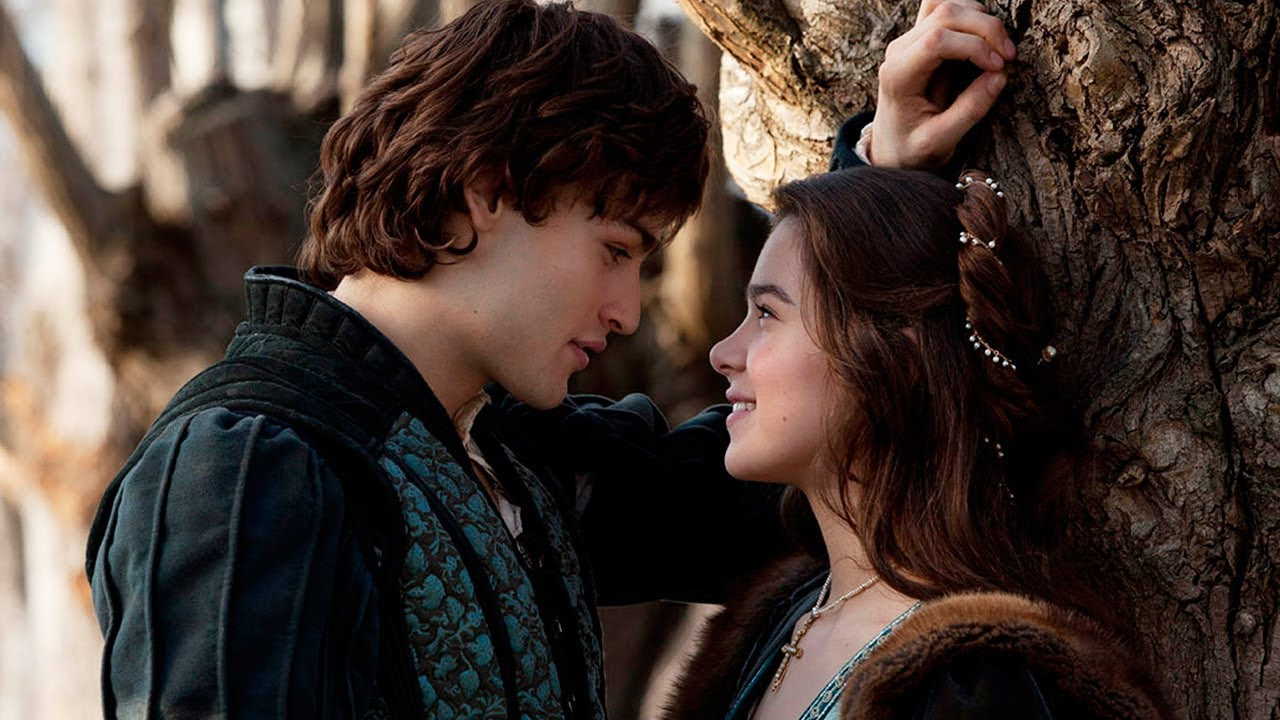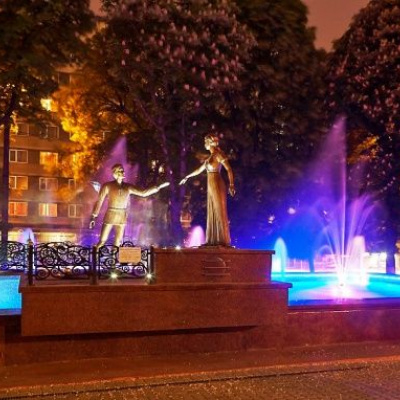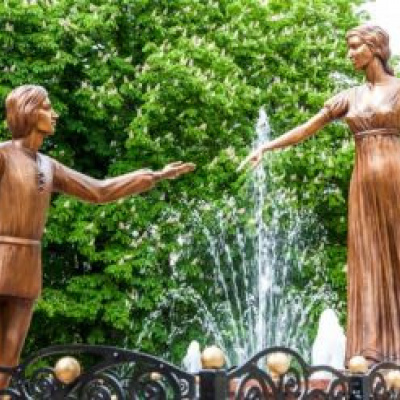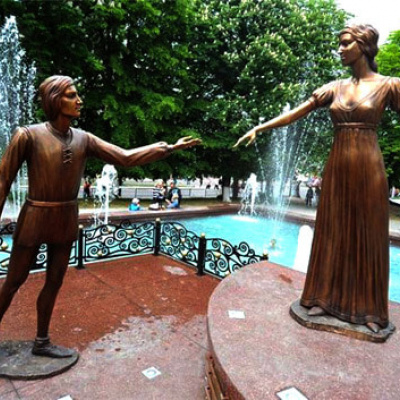Fountain of lovers
We recommend visiting this corner of Lviv, where the stands have love stories written in Ukrainian in the form of hearts. Next to the fountain there is a table with the story of the origin of Romeo and Juliet, hang a lock on the monument of hearts for your happiness with your soul mate. The sculptures have the features of real people - Pelagia and Romualdo who lived in Lviv in the 16th century. The famous Polish historian B. Zymorowicz wrote about the fate of the lovers, and in 1845 D. Zubrytsky mentioned them. The records state that two families lived in the city: an Italian family (Romualda) and a Ukrainian family (Pelagei). In adulthood, they fell in love, but Romualdo was a Catholic and Palegea was Orthodox. Lviv punished those who allowed the mixing of religions. In 1518, an Orthodox Armenian and a Catholic Polish woman who had fallen in love were burned alive on the main square.
Enmity broke out between the families and the lovers were forbidden to meet. In 1593, Romualdo's parents sent their son to Venice, with which Lviv had business relations. The young man's journey lasted several months. In 1594, the plague struck Lviv. Upon returning from Italy, Romualdo learned that Pelageya was ill with the plague. In those days, plague patients were taken away from the city and left in a garden near the Krakow market. Monks looked after them there. Romualdo found his beloved and stayed with her, hoping to save her from death. But the girl died, and eventually the young man also fell ill with the plague. He knew he didn't have long to live and ordered two identical tombstones in the shape of two hearts with the inscription: "Even death is powerless to separate those whom love has united for eternity." The deaths of the children of both families reconciled them. They fulfilled the consistent will of the lovers and buried them together. After Romuald's death, his friends traveled with a trade caravan to Italy, where they told their friends about their romantic love and the tragic fate of the lovers.
It is said that the Italians added vivid details to the Lviv story and included it in a series of short stories that caught the eye of William Shakespeare, and that is how the famous play Romeo and Juliet appeared. The fountain was opened on May 9, 2013. The customer was Oleg Bilyi (co-owner of the Maestro restaurant). According to Oleg, the old fountain had become unusable and had to be demolished. A bronze sculpture with a fountain was created at the new location. The author of the project was sculptor M. Goza.





